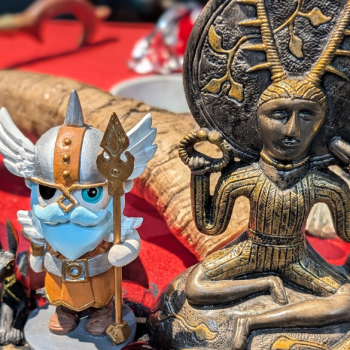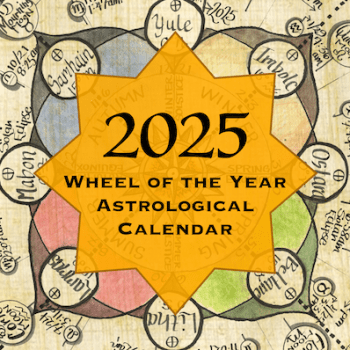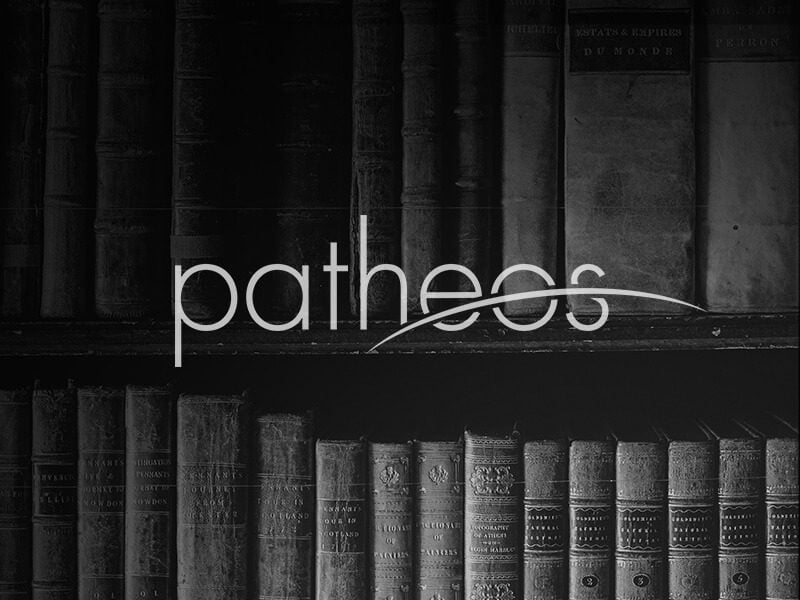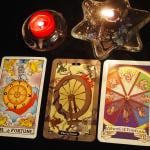By February 1973 only five people had survived the year of training in the Spiral Dance Coven; the Full Moon Coven worked the Red Cord initiation for them in February and March of 1973. Now for the first time, there were Red Cord members of NROOGD who were not members of the Full Moon Coven, which therefore decided to transfer responsibility for running NROOGD as a whole (and particularly the Sabbats) to a new Red Cord Council, which would consist of everyone with a Red Cord from a coven descended from or trained by members of the Full Moon Coven. This new Council met for the first time in March 1973 and took over running the Order for the next three years.
Even after the creation of the Full Moon Coven in October 1969, the Order maintained an identity of its own. It was not unusual for a member with the Order White Cord to be asked to take a role as a Priestess at a Sabbat up through 1971. During 1972 such invitations became rare, and after the creation of the Red Cord Council in 1973, only women who were active in a coven were asked to serve as Priestesses. The Order became only the fringe on the skirts of the covens.
In March 1973, the members of the Horned Moon Coven persuaded Glenn that they wanted to be a “real” coven, switched to having skyclad esbats just before full moon, and changed their name to Stone Moon. The next month, Judy Foster announced that her Moon Seed study group had also evolved into a full coven, which continued in fine form until 1976.
For Beltane 1973 the Red Cord Council decided to try having a skyclad Sabbat, for initiates only, for the first time. We thought that having a concentration of several dozen skyclad Witches to raise a cone of power might be an interesting experience. As it turned out, this experiment also had a useful purpose. On the morning before the Sabbat, Alison Harlow phoned to tell us that Victor had awakened at 4:00 a.m.vomiting blood and had been rushed to the hospital; he was in intensive care, and his prognosis was guarded. We immediately agreed to focus the Sabbat on healing Victor.
After some local calls, I was able to reach Herman Slater at the Warlock Shop inNew York City. He in turn phoned Lady Theos, who then phoned me, quite to my surprise. We chatted; she offered to send me what information she could on Gardnerian practices, said she would contact as many covens as she could to set up a national cone of power for Victor, and proceeded to do so. Later that day she told me she was quite astonished; this was the first time that all the Traditions were getting together, despite the squabbles, to work for a common purpose.
The Sabbat was held, the magic worked, with Alta directing the cone. The doctors were apparently puzzled the next morning; they could not even see where the bleeding had been coming from. Gwydion did some counting and found that exactly 13 covens were working that night, though many Witches were also working for Victor individually at the appointed hour; Gwydion estimated that about 500 people had participated.
I sent Lady Theos a copy of most of our Book of Shadows, along with an explanation that we were trying to coopt ourselves into the Gardnerian movement as allies, not competitors. We had written the NROOGD ritual as a way to improve the Gardnerian working, not replace it. I was grateful to learn that that was exactly the spirit in which she accepted it. She recognized that we were in fact practicing her religion, even without access to the specific Gardnerian secrets, and in turn sent me several lengthy letters of commentary on the details of the Book of Shadows as we had reinvented it, thus giving us many pieces of information whose value was not obvious until some years later.
A few months later, in the course of her trip across the United States, gathering the raw materials that would become her Drawing Down the Moon, Margot Adler arrived inCalifornia to interview the NROOGD members. I shared with her not only our Book of Shadows, but all the training materials we had accumulated. These she took back toNew York with her, to use in training the new coven she soon was starting.
The five members of the Spiral Dance coven had tried to work together for a few months in 1973, but then began to diverge onto other paths. By June Latona alone remained; as the acting Priestess of the coven, she then built it back up, and it continued as an active coven for the next five years. Similarly, Larry K. (Gandalf) founded his own coven, the Tuatha de Taran, in September 1973.
By August 1973, Geoff Baldwin and the late Barbara Brook decided to work only in the Stone Moon Coven, rather than come to esbats two nights in a row. The decentralization of power, the fact that all new growth energy was going into the newer covens, the fact that the Full Moon Coven was no longer the center for decisionmaking in the NROOGD, all began to take a toll on it. Average attendance began to drop, slowly but steadily; it was down to about 11 by the end of 1973.
In December 1973, Gwydion had decided to do something about Hans Holzer, who had discovered the existence of the Craft in the late 1960s and had decided to make himself an expert on it. He had in fact been given Alexandrian initiation by Mary Nesnick, but did not grasp that she was either unknown to or disliked by most of the people then active in the Craft. Because of Nemeton’s prominence in the national Neopagan scene in 1973, Holzer had written to Gwydion and asked to come meet Nemeton members, be initiated as a member, and so on. Gwydion had been planning to subject Holzer to a pseudo-initiation that, when he printed it, would prove him to be a complete fool, but Victor and Cora vetoed it. Instead a committee was formed to go with Gwydion to tell Holzer “No.” It included Alan and Erif, Isaac Bonewits, Sharon Devlin, and, at the last minute, Joe and Mara Wilson, who had simply stopped by to visit on their way up to Oregon to visit Sara Cunningham. Afterward we gathered at Caerdderwen, Gwydion and Alison’s home in Oakland, for the esbat that Holzer had been uninvited to, joined by Morning Glory and Dan Norman from the Church of All Worlds and several more NROOGD members. Alison and Gwydion worked their actual Feri ritual for us; most of us had never before seen it, or anything like it; it was an extraordinary experience. The party afterward was itself extraordinary. It was a milestone in creating positive relationships between different Craft traditions inCalifornia.
In 1974, because of steadily increasing contacts and interactions with other Witches and Pagans, the pattern of the NROOGd’s activities began to evolve rapidly along new paths, which I will describe later. I offer the details here about the NROOGD’s origins, growth, and practices in order to portray them, not as unique, but rather as typical. As far as I know from conversations with other Witches, this pattern of a core group of friends deciding to begin a coven in order to practice the Craft, of growth from a study group into a Pagan society and/or into a coven, and of gradually interacting with Witches in other covens and Traditions, has been very much a common experience in America. What was original about the NROOGD was that we never pretended that we had any secret information or authority from anyone but ourselves to reinvent the Craft as a spiritual path that could work for us. Hence we knew, as others have now learned, that practicing the Craft as a religion does not require either secrecy or authorization from any predecessors.
[The foregoing and the previous post are a condensed summary of the first chapters of Hippie Commie Beatnik Witches, which is available on AMazon at http://www.amazon.com/Hippie-Commie-Beatnik-Witches-Reformed/dp/1460958241/ref=sr_1_1?ie=UTF8&qid=1355690493&sr=8-1&keywords=Aidan+Kelly I will be providing a summary of later chapters after I discuss events in the rest of the country from 1969 through 1973, because the reader must know about them in order for the developments in California in general from 1969 through thre late 1970s to make any sense.]















